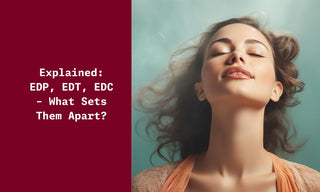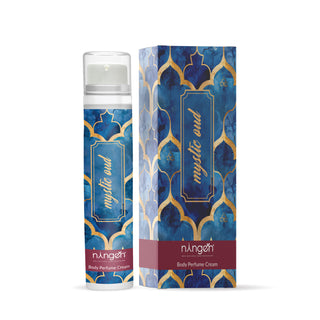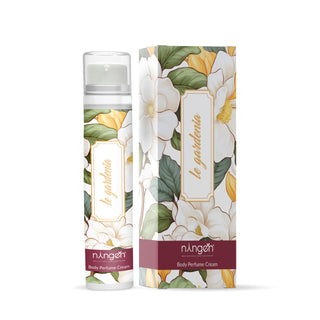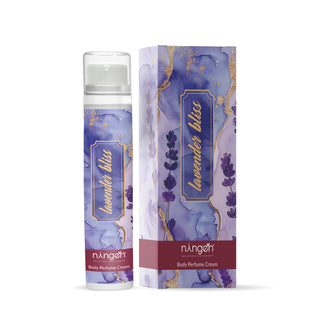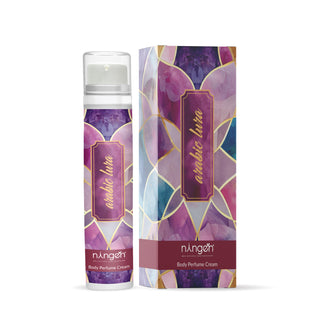Step into the captivating world of perfumery as we unravel the differences between Eau de Parfum (EDP), Eau de Toilette (EDT), and Eau de Cologne (EDC) . Join us on this aromatic journey as we explore the unique qualities of each type, including their strength, lasting power, and the captivating stories they tell.
By uncovering the secrets hidden within these elegant bottles, we'll transition from casual fragrance enthusiasts to savvy scent connoisseurs. Let's embark on this exciting adventure and uncover the intriguing tales behind every delightful scent.
Table of content;
- Understanding Perfume Concentrations
- Eau de Parfum (EDP)
- Eau de Toilette (EDT)
- Eau de Cologne (EDC)
- Key Differences Between EDP, EDT, and EDC
- Concentration of Fragrance Oils and Perfume Essence
- Factors Affecting Perfume Longevity and Projection
- Finding the Perfect Fragrance for You
- Understanding Different Fragrance Families
- Consider Your Personal Preferences
- The Bottom Line
- TL;DR: (Too long; did’t read)
- Frequently Asked Questions
Understanding Perfume Concentrations
When diving into the world of scents, it's essential to understand that the strength, longevity, and character of a perfume are profoundly influenced by its concentration. Simply put, the concentration of a fragrance refers to the ratio of perfume essence – a mixture of aromatic compounds, essential oils, and fixatives – to the solvent, which is typically alcohol or a mix of alcohol and water. The higher the concentration of perfume essence, the stronger and longer-lasting the fragrance will be. Key metrics such as the concentration of perfume oil and the types of ingredients used determine not only the intensity but also the ‘personality’ of the scent as it interacts with your skin.
The Basics of Perfume Concentrations
Perfume concentrations are categorized into various types, each offering a different experience in terms of scent prominence and longevity.
The common designations you'll encounter include Parfum, Eau de Parfum (EdP), Eau de Toilette (EdT), Eau de Cologne (EdC), and Eau Fraiche. Often matched with personal preference, skin type, or the occasion, knowing the basics will help guide your choices. For example, those with sensitive skin might opt for a lighter fragrance concentration, as stronger scents can potentially irritate.
How Concentrations Affect the Scent
Understanding the dilution of fragrances and their relevant concentrations is integral to recognizing how the scent will behave on your skin. The concentration of fragrance oil not only determines the intensity of the scent but also its longevity.
Higher concentrations, like Parfum or Extrait de Parfum, have the least amount of alcohol and the highest percentage of perfume essence. This results in a fragrance that is more pronounced and lasts longer on the skin, often revealing its depth through complex fragrance notes over time.
Conversely, lighter scents, such as Eau de Cologne or Eau Fraiche, with a lower concentration of perfume oil, offer a more subtle, often refreshing experience, suitable for everyday wear but requiring more frequent daily application.
Cream-based perfumes are alcohol-free and contain higher perfume concentrations for a longer-lasting fragrance with no skin irritation and no staining on clothes.
Note: Know more about how to make perfumes long-lasting. Click on the link.
Common Types of Perfume Concentrations
|
Type of Fragrance |
Concentration of Perfume Essence |
Recommended Use |
|
Parfum or Perfume Extract |
20-40% |
Special occasions, evening wear |
|
Eau de Parfum (EdP) |
15-20% |
Daily wear, special occasions |
|
Eau de Toilette (EdT) |
5-15% |
Everyday wear, work environment |
|
Eau de Cologne (EdC) |
2-4% |
Freshening up, light daytime wear |
|
Eau Fraiche |
1-3% |
Refreshing splash, immediately after a shower |
|
Perfume cream |
10-20% |
Daily Wear, Special occasions |
Always remember, the right type of fragrance is as much a part of personal style as one's wardrobe. Whether you're dressing for a casual day out or a formal event, pairing the right fragrance concentration with the occasion can enhance the overall sensory experience.
Eau de Parfum (EDP)
Eau de Parfum, commonly abbreviated as EdP, is a type of fragrance known for its significant concentration of perfume essence. It strikes a balance between potency and subtlety and is favored for its long-lasting scent without being overwhelmingly strong.
Definition and Characteristics of Eau de Parfum
Eau de Parfum contains a higher concentration of fragrance oil—typically around 15-20%. This concentration makes it one of the most popular types of fragrances available due to its fine balance between strength and wearability. With its higher perfume oil concentration, EdP provides a scent that can last for a considerable number of hours, making it a more concentrated choice than Eau de Toilette but not as intense as Parfum or Perfume Extract. Additionally, the lower alcohol content compared to lighter fragrances means that Eau de Parfum is often less drying to the skin, and thus suitable for those with sensitive skin types.
When to Wear Eau de Parfum
Eau de Parfum is versatile enough for both everyday wear and special occasions. Its relatively long-lasting nature allows for a fragrance that persists throughout the workday but isn't too overpowering in close quarters or professional settings. On the other hand, the rich and complex scent profile that unfolds with an EdP is also ideal for evenings out or events where you want your fragrance to make a more pronounced statement.
|
Occasion |
Suitability for EdP |
|
Daily wear |
Highly suitable |
|
Work environment |
Suitable |
|
Casual outings |
Suitable |
|
Evening events |
Ideally suited |
|
Special occasions |
Ideally suited |
Eau de Toilette (EDT)
Eau de Toilette, often abbreviated as EDT, is a type of perfume with a medium to low concentration of perfume oils. It is one of the most common and popular types of fragrances available due to its lighter scent profile and suitability for everyday wear.
Definition and Characteristics of Eau de Toilette
Eau de Toilette traditionally contains a concentration of fragrance oil that ranges from approximately 5-15%, making it lean more towards the fresher, lighter end of the fragrance spectrum. Because of this relatively lower concentration of perfume essence, EDTs tend to evaporate more quickly compared to their Eau de Parfum counterparts. A hallmark of EDT is the subtle presence it maintains, which lingers without leaving an overpowering trail. This makes Eau de Toilette an ideal choice for those who prefer a less intense fragrance experience.
The term itself, "toilette," stems from the French word for grooming or getting ready, pointing to the light and refreshing nature of these fragrances that are perfect for spritzing on as part of one's daily grooming routine. The dilution in the alcohol-based solvent ensures that EDTs give off a satisfying scent upon application that will gently fade over time.
When to Wear Eau de Toilette
Eau de Toilette is perfect for those who are seeking a fragrance for everyday wear. Its lighter scent profile makes it a favorite for daytime activities where a strong perfume may not be appropriate. Here's a breakdown of suitable occasions for wearing an EDT:
|
Occasion |
Suitability for EDT |
|
Daily wear |
Highly suitable |
|
Office settings |
Suitable |
|
Warm weather |
Ideally suited |
|
Informal meetings |
Suitable |
|
Evening outings |
Less suitable |
Given its discreet character, an EDT can complement work attire without overwhelming the workspace. Additionally, during the warmer months, an EDT's fresh quality aligns well with the temperatures and often incorporates vibrant, energizing notes.
Eau de Cologne (EDC)
Eau de Cologne, commonly abbreviated as EDC, represents a gentle class of fragrance known for its light and refreshing scents. Originating from the city of Cologne, Germany, it has historically signified a distinguished European sophistication.
Definition and Characteristics of Eau de Cologne
Eau de Cologne boasts a relatively low concentration of perfume oils, typically ranging from approximately 2-4%. This makes it one of the lightest perfume types available, delivering a crisp and fleeting experience of scent that is enjoyed for its simplicity and modesty. Characteristically, EDCs have a major concentration of citrus notes, which contribute to their bright and zesty aromas. The combination of light fragrance and quick evaporation rate gives Eau de Cologne its ephemeral quality, but also a sparkling introduction that appeals upon first application. The low concentration of essences makes it particularly suitable for individuals with sensitive skin or those who prefer a lighter touch of fragrance.
When to Wear Eau de Cologne
Eau de Cologne can be worn on a variety of occasions where a subtle scent is desirable:
|
Occasion |
Suitability for EDC |
|
Casual daytime |
Highly suitable |
|
Exercise sessions |
Suitable |
|
Hot weather |
Highly suitable |
|
Corporate events |
Less suitable |
|
Formal occasions |
Least suitable |
Given its gentle aroma, Eau de Cologne is ideal for moments of activity or high heat, as it does not overwhelm the senses but rather provides a refreshing lift. Although not typically chosen for formal events, its clean, unassuming presence makes it a perfect everyday companion.
Key Differences Between EDP, EDT, and EDC
Within the spectrum of fragrances lies a variety of types, each classified by their concentration of fragrance oils and the duration of their scent. The main abbreviations you'll encounter when selecting a fragrance are EDP (Eau de Parfum), EDT (Eau de Toilette), and EDC (Eau de Cologne). These refer to the concentration of perfume oils within the fragrance, which directly affects the scent's intensity, longevity, and appropriate occasions for wear.
- EDP, Eau de Parfum, contains a higher concentration of fragrance oils, typically between 15-20%. It offers a rich and long-lasting aroma.
- EDT, Eau de Toilette, offers a medium concentration of around 5-15%. It's lighter than EDP and suited for everyday wear without being overpowering.
- EDC, as previously described, has the lowest concentration of fragrance oils, about 2-4%, resulting in a light, fresh scent.
An extension of these categories is Extrait de Parfum, or Pure Perfume, with the highest concentration, usually between 20-30%; and Eau Fraiche, with the least concentration, around 1-3%, even lower than EDC.
Understanding these key differences helps in choosing a fragrance based on personal preference, skin type, and the occasion you plan to wear it.
Concentration of Fragrance Oils and Perfume Essence
The concentration of fragrance oil is what defines each type of perfume. Perfume extract, or Extrait de Parfum, is the most potent form, with the highest concentration. Eau de Parfum follows, with an elevated fragrance oil content that typically provides a deep and lasting scent. Eau de Toilette is more diluted, suitable for a more discreet presence. Eau de Cologne offers a light and airy fragrance profile with the lowest concentration of perfume essence among these types.
In terms of composition:
- Extrait de Parfum: 20-30% fragrance oil
- Eau de Parfum (EDP): 15-20% fragrance oil
- Eau de Toilette (EDT): 5-15% fragrance oil
- Eau de Cologne (EDC): 2-4% fragrance oil
- Eau Fraiche: 1-3% fragrance oil
- Perfume cream: Comes under EDP with 10-20% fragrance oil
This hierarchy of concentration impacts not only the strength of the fragrance when worn but also its longevity on the skin and projection in the air.
Longevity and Projection
The longevity of a fragrance refers to how long the scent lasts on the skin, while the projection determines how far the scent travels from the body.
- Eau de Parfum: Long-lasting (4-8 hours) with moderate to strong projection, making a statement and staying noticeable throughout wear.
- Eau de Toilette: Moderate longevity (2-4 hours) with a lighter projection that can be sensed up close without overwhelming the senses.
- Eau de Cologne: Short-lived (1-2 hours) with a soft projection, ideal for a subtle hint of fragrance.
- Extrait de Parfum: Exceptionally long-lasting (6-8 hours or more) with a strong projection, reserved for special occasions.
- Perfume Cream: Enduring for a duration of 4 to 8 hours, emitting a moderate to potent scent that asserts itself and remains noticeable during use.
These characteristics should be considered when selecting a fragrance, based on how long and how prominently one wants their scent to be detected.
Ideal Occasions and Seasons
The type of fragrance chosen can depend on the event or the climate, matching intensity and longevity to the setting:
|
Type of Fragrance |
Ideal Occasions |
Ideal Seasons |
|
Extrait de Parfum |
Formal events, Special occasions |
Cooler months |
|
Eau de Parfum |
Evenings out, Important meetings |
Any, versatile |
|
Eau de Toilette |
Everyday wear, Casual gatherings |
Spring/Summer |
|
Eau de Cologne |
Outdoor activities, Warm weather |
High heat conditions |
Each type of fragrance offers a different level of sophistication and subtlety designed to complement the wearer's environment and intentions.
Intensity of Scent
The intensity of a scent directly correlates with the concentration of perfume oils it contains. Here's how each type ranks:
- Extrait de Parfum: Most intense, rich, complex fragrance notables.
- Eau de Parfum: Strong fragrance, more noticeable with assertive sillage.
- Eau de Toilette: Moderate intensity, often a lighter scent that whispers rather than shouts.
- Eau de Cologne: Lightest of the traditional fragrance types with a fleeting, fresh scent.
- Perfume cream: Strong fragrance, more prominent with an assertive scent trail.
The intensity should align with personal preference, skin type, and occasion. For instance, those with sensitive skin or scent sensitivities may prefer EDC's light fragrance, while others seeking a powdery or strong perfume for special occasions may lean towards EDP.
Factors Affecting Perfume Longevity and Projection
When selecting a fragrance, understanding the factors that affect perfume longevity and projection is crucial for achieving the desired effect. Various elements play a role in how long a scent lasts and how far it travels.
Skin Type and pH Level
The skin type and pH level can significantly influence a perfume's performance. Dry skin tends to absorb fragrance oils faster, leading to shorter longevity, whereas oily skin can help a scent linger for a longer period. The unique pH level of an individual's skin can alter the way fragrance notes develop and interact, sometimes enhancing or diminishing the overall scent experience.
|
Skin Type |
Impact on Fragrance |
|
Dry |
Shorter longevity |
|
Oily |
Longer longevity |
|
Normal/Combined |
Neutral/Varied longevity |
To optimize fragrance longevity, those with dry skin might consider using a moisturizer before applying perfume, which can create a more hospitable surface for the fragrance to adhere to.
Application Technique
How and where you apply perfume can also impact its staying power and reach. Here are some tips for maximizing longevity and projection:
- Pulse Points : Apply fragrance to pulse points like the wrists, neck, behind the ears, and inside the elbows to amplify the scent through body heat.
- Distance : Spritz perfume from approximately 6 inches away to ensure a more even distribution across the skin.
- Layering : Utilize scented body lotions or oils that complement your perfume to build a foundation that can extend the fragrance's life.
|
Technique |
Benefit |
|
Layering |
Enhances longevity |
|
Pulse Points |
Increases projection |
|
No Rubbing |
Prevents breaking down notes |
Remember, rubbing wrists together after applying fragrance can disrupt the delicate top notes, reducing the perfume's complexity and longevity.
Quality of Ingredients
The caliber of ingredients in a fragrance determines not only the scent profile but also its durability on the skin. Higher-quality, pure fragrance oils typically offer richer aromas that persist longer, while synthetic or filler ingredients may evaporate more rapidly or develop unevenly on the skin.
- Natural vs. Synthetic : Natural ingredients can evolve with the skin's chemistry, while synthetics may fade faster.
- Concentration : A higher concentration of high-quality perfume oils usually correlates with enhanced longevity and stronger projection.
|
Ingredients |
Impact |
|
Natural |
Potential for better longevity |
|
High-Quality |
Stronger projection |
|
Concentration |
Directly affects both factors |
Storage Conditions
Proper storage is vital for preserving a fragrance's integrity. Exposure to light, heat, and humidity can break down the perfume oils, altering the scent and reducing its lifespan. Below are the optimal conditions for storing fragrances:
- Temperature : Store perfumes in cool, consistent temperatures, away from direct sunlight.
- Humidity : Avoid bathrooms or other humid areas to prevent degradation.
- Darkness : Keep bottles in their original boxes or in a dark environment.
|
Storage Condition |
Purpose |
|
Coolness |
Prevents heat damage |
|
Low Humidity |
Minimizes breakdown of oils |
|
Dark Environment |
Protects from light exposure |
By following these guidelines, you can significantly influence the staying power and presence of your chosen scent, ensuring that your fragrance makes the right impact for the right duration.
Finding the Perfect Fragrance for You
Choosing a fragrance is like picking an outfit; it's personal and reflects who you are. Understanding perfume types is key. The main ones—Parfum, Eau de Parfum (EDP), Eau de Toilette (EDT), and Eau de Cologne (EDC)—vary in oil concentration, affecting how long they last and when they're best worn.
- Parfum (Extrait de Parfum) : With the strongest fragrance concentration, typically between 20-30%, Parfum is the most enduring and often comes with a higher price tag. Its potency makes it a favorable choice for special events where a lasting impression is desired.
- Eau de Parfum (EDP) : Offering a slightly lighter scent with a concentration of 15-20% perfume essence, EDPs are a popular choice for everyday wear, balancing longevity with a less overpowering presence.
- Eau de Toilette (EDT) : With a perfume oil concentration of 5-15%, EDT presents a lighter fragrance suitable for daytime wear. It provides a fresh touch and is often favored for its versatility.
- Eau de Cologne (EDC) : Known for the lowest concentration of fragrance oil, around 2-5%, EDC offers a light, refreshing scent that is perfect for a post-shower spritz or a delicate touch of fragrance.
Here's a quick reference table highlighting the distinctions:
|
Type of Fragrance |
Perfume Oil Concentration |
Suggested Usage |
|
Parfum |
20-30% |
Special occasions |
|
Eau de Parfum |
15-20% |
Everyday wear |
|
Eau de Toilette |
5-15% |
Daytime versatility |
|
Eau de Cologne |
2-5% |
Light, post-shower fresh |
Remember to consider the setting, your skin type, and how the dilution of fragrances interacts with your body chemistry when choosing a perfume. Each type offers its own unique olfactory experience, perfect for different occasions and moods.
Understanding Different Fragrance Families
Fragrances are categorized into families based on their dominant notes and underlying characteristics. Here are the primary fragrance families:
- Floral : Often constructed from the scent of one or more flowers, this family is one of the most popular and features a romantic, feminine feel.
- Oriental : Rich and slightly spicy, oriental fragrances exude warmth and sensuality with notes like vanilla, incense, and exotic flowers.
- Woody : Grounded in earthy notes such as cedarwood, sandalwood, and vetiver, these fragrances tend to be warm, dry, and calming.
- Fresh : Characterized by clean, bright scents, fresh fragrances include citrus, green, and aquatic notes that invigorate the senses.
- Fougère : Meaning 'fern' in French, fougère fragrances blend lavender, oakmoss, and coumarin to create a fresh, woody aroma.
- Chypre : Marked by the contrast between fresh citrus top notes and a warm, mossy-woody base, chypre fragrances are rich and enduring.
Understanding fragrance families can significantly narrow your search, guiding you towards scents that align with your olfactory preferences.
Consider Your Personal Preferences
When selecting a fragrance, start by assessing your personal preferences. Do you gravitate towards a strong perfume that makes a bold statement, or do you prefer a lighter scent for subtle allure? Let your personality, lifestyle, and the moments you wish to capture dictate your choice.
Consider the following to personalize your fragrance selection:
- Occasions : Different scents suit varying contexts—lighter fragrances for casual outings and stronger scents for evening events.
- Seasons : Opt for fresh, aquatic, and citrus scents in warmer months and embrace heavier, spicy, or woody notes as it gets colder.
- Fragrance Notes : Familiarize yourself with different notes. Top notes offer the first impression, middle notes form the heart of the fragrance, and base notes provide depth and longevity.
|
Preference |
Suggestion |
|
Bold Statement |
Choose Parfum or EDP |
|
Subtle Allure |
Select EDT or EDC |
|
Casual or Formal |
Lighter vs. Stronger |
|
Seasonal Wear |
Fresh vs. Warm Notes |
Explore our handpicked assortment of cream-based perfumes in the designated category.
The Bottom Line
I hope this blog has provided a comprehensive exploration of perfume concentrations, highlighting the differences between Eau de Parfum (EDP), Eau de Toilette (EDT), and Eau de Cologne (EDC) . By understanding how concentration affects scent intensity, longevity, and suitable occasions for wear, readers can make more informed choices when selecting fragrances. Whether opting for a bold statement with EDP or a subtle allure with EDT, this guide equips readers with the knowledge to navigate the captivating world of perfumery and discover scents that suit their style and preferences.
“Perfume is like music that you wear.” – Mathilde Thomas
TL;DR: (Too long; did’t read)
This blog explores the differences between Eau de Parfum (EDP), Eau de Toilette (EDT), and Eau de Cologne (EDC), focusing on their concentrations of perfume oils, scent profiles, and suitability for various occasions. EDP offers rich, long-lasting scents ideal for special events, while EDT provides lighter, everyday fragrances. EDC offers a refreshing, subtle option for casual wear. Understanding these distinctions helps in choosing the right fragrance based on personal preference, occasion, and skin type.
Frequently Asked Questions
Question: What is the main difference between EDP, EDT, and EDC?
Answer: EDP (Eau de Parfum) has a higher concentration of perfume oils compared to EDT (Eau de Toilette) and EDC (Eau de Cologne), resulting in a stronger and longer-lasting scent.
Question: How does the concentration of perfume oils vary among EDP, EDT, and EDC?
Answer: EDP typically contains 15-20% perfume oil, EDT ranges from 5-15%, and EDC has the lowest concentration at about 2-4%.
Question: What factors influence the longevity of fragrances in EDP, EDT, and EDC?
Answer: The concentration of perfume oil, quality of ingredients, skin type, and application technique all contribute to the longevity of fragrances in each category.
Question: Are there specific occasions where EDP is more suitable compared to EDT or EDC?
Answer: EDP is often preferred for evening events or special occasions where a longer-lasting scent is desired. EDT and EDC are more suitable for daytime wear or casual outings.
Question: Can EDP, EDT, and EDC be layered together for a unique scent experience?
Answer: Yes, layering EDP, EDT, and EDC can create a personalized scent profile by combining different concentrations and notes.
Question: How do the scent profiles differ between EDP, EDT, and EDC?
Answer: EDP typically offers a richer and more complex scent compared to the lighter and fresher profiles of EDT and EDC.
Question: Are there any recommendations for individuals with sensitive skin regarding EDP, EDT, and EDC?
Answer: Individuals with sensitive skin may prefer lighter concentrations like EDT or EDC to avoid potential irritation.
Question: Does the price of EDP, EDT, and EDC vary significantly based on their concentration?
Answer: Generally, EDP tends to be more expensive than EDT and EDC due to its higher concentration of perfume oil.
Question: Can the same fragrance be found in both EDP and EDT formulations? If so, how do they compare?
Answer: Yes, some fragrances are available in both EDP and EDT formulations. However, the EDT version will generally have a lighter scent and shorter longevity compared to the EDP.
Question: Are there any tips for choosing between EDP, EDT, and EDC based on personal preference and lifestyle?
Answer:Consider your preference for scent intensity, occasion, and skin type when choosing between EDP, EDT, and EDC. EDP is ideal for those who prefer longer-lasting scents, while EDT and EDC are suitable for everyday wear and warmer weather.


